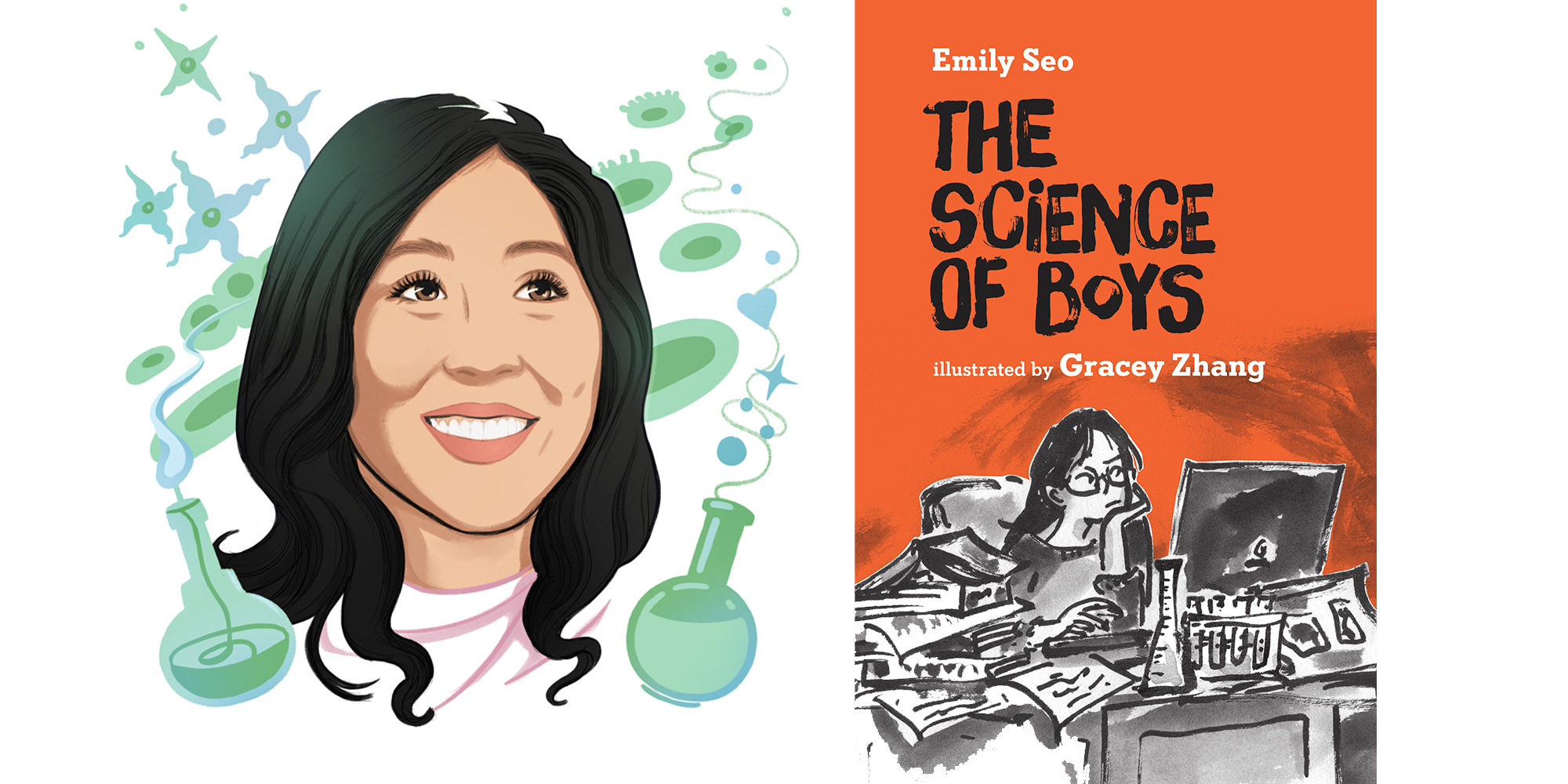If author Emily Seo could pick one scientific concept to describe adolescence, it would be the second law of thermodynamics: the entropy or disorder of the universe will increase over time. In short, there will be chaos – and that’s exactly what ensues in her debut middle-grade novel, The Science of Boys (Tradewind Books), when main character and science nerd Emma Sakamoto tries to help a popular girl catch a boy’s eye.
Seo comes by the science legitimately – she has a PhD in chemistry, worked for more than six years as the lab director at the University of British Columbia’s Shared Instrument Facility, and currently writes for the Society for Applied Spectroscopy. She’s long wanted to write something for children, but of the nonfiction variety. Over Zoom, she holds up a stapled collection of hand-illustrated pages entitled Atoms Are Everywhere. “I did this book for fun, but it got me really interested in writing,” she says, flipping through the colourful drawings and reading the rhyming text.
She took a continuing education nonfiction-writing course, followed by a fiction one, and that’s where The Science of Boys began. “A girl in my class was having boy problems,” Seo explains. “I don’t know why she thought I was an expert in any way, but she asked how my husband and I got together. I started giving advice: ‘You have to be yourself,’ ‘Never dump your friends for a guy.’ Next thing you know, she said, ‘These are really good – why don’t you write them down?’” Another classmate suggested applying scientific principles to the advice. A short story was born, as was a love for writing fiction.
For years, while she worked full-time and had a small child at home, that short story sat neglected, though Seo constantly thought about it. After her second maternity leave, life took a turn. “I was still focused on academia and science, but I found myself at a crossroads. Many factors played a role, but ultimately I decided it was now or never to follow my dream of writing this book.” With interest from a publisher, she got to work writing and reading. A lot. “I did more reading in the past five to seven years than in my whole life!” Seo says with a laugh.
She also did a lot of research – interviewing classrooms of students, handing out anonymous questionnaires to teens, talking with her friends who had older kids – all of which helped inform the points of view and issues she tackles in The Science of Boys. And there are a lot of issues, from peer pressure to first crushes and social media addiction – i.e., chaos. Seo also shines a light on relationships, such as the true meaning of friendship, shared family meals (Emma and her father make breakfast using scientific instruments), and game nights (they play a made-up board game, Elementabble, in which they create words using periodic table symbols).
Seo wrote chapters based on scientific concepts, but quickly learned this approach didn’t lead to a cohesive whole. A reminder from her editor that, when writing a novel, story comes first and science second, led Seo to rearrange and separate chapters to make the narrative work. She then consulted the British Columbia school curriculum to see what grade 8 students were studying and overlaid those scientific concepts (rather than her more complex ones) onto the story, allowing Seo to fulfill the original goal of Atoms Are Everywhere: to familiarize children with scientific terms so they wouldn’t be so worried about the subject in school.
And she accomplishes just that. Seo explains science by applying it to the familiar everyday. In chapter two, for example, Seo introduces cell differentiation, a process by which a stem cell changes into a more distinct cell type, which corresponds with Emma observing everyone’s differences on the first day of school. Using cells as an analogy for humanity “links everything together,” says Seo. “It doesn’t matter who you are, we’re made up of the same things, so we just want to be kind to each other.”
Writing has been kind to Seo. She received a grant from the Canada Council for the Arts for her next middle-grade novel; she’s been asked to write a sequel to The Science of Boys; and she’s working on various manuscripts for younger readers.
So, what scientific concept would Seo apply to writing? Chemical synthesis. “You have all these words and sentence fragments as starting materials, then you have to piece them together. The chemical reaction is the rearrangement,” she explains. “Everything has to work together for the desired product to be attained.”
Illustration: Rachel Idzerda

 Contact us via email
Contact us via email
